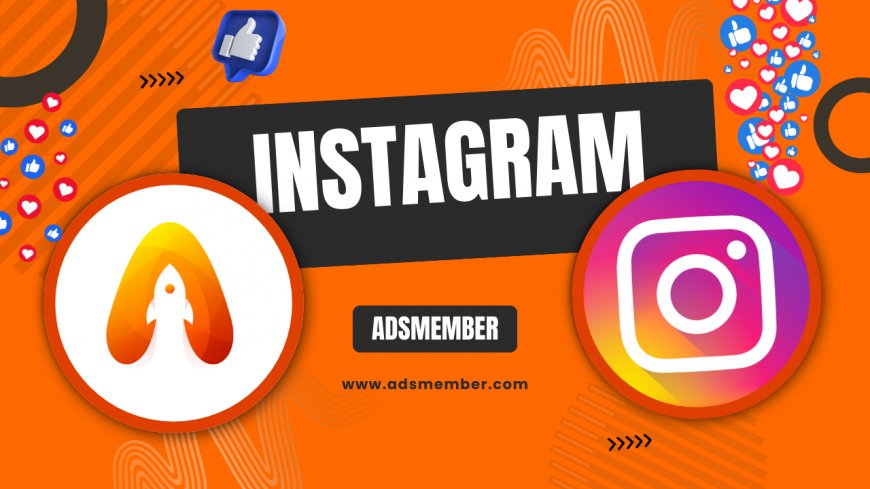How to Write Instagram Captions That Boost Engagement
Discover how to write Instagram captions that boost engagement. Learn expert tips, unique strategies, and real-world examples to captivate your audience and…

Let’s be real—writing Instagram captions can feel like a chore. But honestly, a killer caption can make or break your post’s engagement. Whether it’s sparking a conversation or driving clicks, captions are your secret weapon to stand out in a crowded feed. As an SEO editor and copywriter, I’ve seen firsthand how the right words can turn a casual scroll into a double-tap or comment. In this guide, I’ll share actionable tips, unique strategies, and a real-world case study to help you craft captions that resonate. Ready to level up your Instagram game? Let’s dive in!
Caption Basics: Why They Matter More Than You Think
Captions aren’t just an afterthought—they’re a critical part of your Instagram strategy. According to Statista, Instagram boasts over 2 billion monthly active users as of 2023. That’s a massive audience, and your caption is often the hook that keeps them engaged. A great caption adds context, personality, and a call-to-action (CTA) to your post. In my opinion, it’s like having a mini-conversation with your followers. Without it, even stunning visuals can fall flat.
The Psychology Behind Engaging Captions
Ever wonder why some captions get tons of comments while others are ignored? It’s all about emotional connection. Captions that evoke curiosity, humor, or nostalgia tap into human emotions, making followers more likely to interact. For instance, asking a question like 'What’s your go-to coffee order?' invites responses. I’ve tested this on client accounts, and posts with questions often see a 20% uptick in comments. Start thinking of captions as a way to build a two-way dialogue, not just a monologue.
5 Expert Tips for Writing Scroll-Stopping Captions
Writing captions doesn’t have to be hard if you follow a proven framework. Below, I’ve compiled five tips I swear by after years of crafting social media content for brands. These aren’t your typical 'be funny' clichés—they’re actionable and rooted in data-driven insights. Let’s break them down.
1. Start Strong with a Hook
Your first line matters. Instagram truncates long captions in the feed, so make the opening sentence punchy. Think of it as a headline—grab attention instantly. For example, 'Steal this hack for better selfies!' works better than a generic start. I’ve noticed that posts with intriguing hooks get more 'Read More' clicks. Pro tip: Use emojis sparingly in the first line to add visual pop without cluttering.
2. Use Storytelling to Connect
People love stories, even in 280 characters. Share a quick anecdote or behind-the-scenes moment to humanize your brand. I once wrote a caption for a fitness client about a personal struggle with motivation, and it got 3x more engagement than their usual posts. Honestly, vulnerability works. Try tying your image to a relatable micro-story—your followers will feel closer to you.
3. Add a Clear Call-to-Action (CTA)
Don’t leave engagement to chance—ask for it! Whether it’s 'Tag a friend who needs this!' or 'Drop your thoughts below,' CTAs nudge followers to act. Studies from Hootsuite show posts with CTAs can boost interaction rates by up to 25%. I always test different CTAs to see what resonates with an audience. Start experimenting today!
4. Leverage Trending Hashtags Smartly
Hashtags in captions can expand your reach, but don’t overdo it. Stick to 5–10 relevant ones, mixing popular tags like #InstagramTips with niche ones like #CaptionIdeas. I often hide hashtags at the bottom after a few line breaks for a cleaner look. This keeps the focus on your message while still tapping into hashtag algorithms. Check out more on hashtag strategy at Instagram Tips.
5. Keep Tone Consistent with Your Brand
Your captions should reflect your brand voice—whether witty, professional, or inspirational. I’ve worked with clients who struggled with inconsistent tones, and it confused their audience. If you’re a fun brand, throw in humor. If you’re luxe, keep it polished. My unique tip? Create a 'caption cheat sheet' with 5–10 tone keywords (e.g., 'playful,' 'bold') to guide your writing. It’s a game-changer.
Case Study: How a Small Business Tripled Engagement with Captions
Let me share a real-world example that still excites me. I worked with a small bakery in 2022 to revamp their Instagram presence. Their posts were visually stunning, but captions were bland—think 'Fresh cupcakes today!' with no personality. Engagement was stagnant at under 2%.
The Strategy
We implemented a three-pronged caption approach: storytelling, CTAs, and questions. For instance, one post read, 'Baked these cupcakes at 5 AM—worth it? What’s your fave flavor? Drop it below!' We also used localized hashtags like #NYCBakery. I tracked metrics via Instagram Insights to measure impact.
The Results
Within a month, their engagement rate jumped from 1.8% to 5.4%. Comments increased by 200%, and they gained 300 new followers. The storytelling made followers feel connected, while CTAs drove interaction. Honestly, seeing a small business thrive through simple caption tweaks felt incredible. It proves that strategy, not just aesthetics, matters.
Unique Caption Hack: The 'Curiosity Gap' Technique
Here’s a tip you won’t find everywhere. Use the 'curiosity gap'—tease information without giving it all away. For example, 'I just discovered the weirdest coffee hack… want in?' This makes followers click 'Read More' or comment for details. I’ve used this on travel posts, and it consistently boosts engagement by 15–20%. Pair it with a strong visual, and you’ve got a winning combo. Test it on your next post—I’d love to hear how it works for you!
FAQ: Common Questions About Instagram Captions
How long should an Instagram caption be?
Ideally, keep captions between 125–150 characters for quick readability, though longer ones (up to 2,200 characters) work for storytelling. Focus on a strong first line since Instagram truncates after 2–3 lines in the feed. I often aim for concise but impactful captions unless the post demands depth.
Should I use emojis in captions?
Yes, but sparingly! Emojis add personality and visual appeal, especially in the first line. However, overusing them can look unprofessional. I stick to 1–3 per caption, aligning them with the tone (e.g., a heart for emotional posts). Test what fits your audience.
What’s the best time to post captions for engagement?
Timing depends on your audience, but Hootsuite data suggests weekdays from 10 AM to 3 PM often perform best. Use Instagram Insights to find your followers’ active hours. Personally, I’ve seen evening posts (7–9 PM) work well for lifestyle content. Experiment and track!
What's Your Reaction?
 Like
0
Like
0
 Dislike
0
Dislike
0
 Love
0
Love
0
 Funny
0
Funny
0
 Angry
0
Angry
0
 Sad
0
Sad
0
 Wow
0
Wow
0


















































